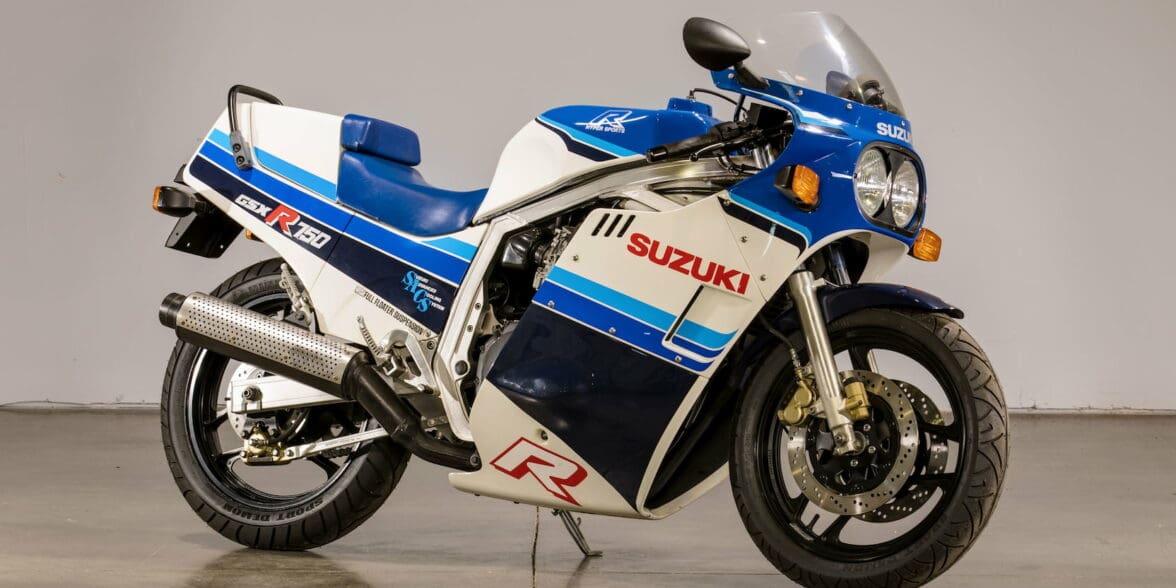As we continue our journey through the decades, it’s time to take a look at the best motorcycles of the 1980s. While every decade in the industry’s history has been a transformative one, the 80s was on another level. It was a decade of immense vision, with motorcycle manufacturers pushing the boundaries of design and squeezing even more performance out of their machines.
The Japanese brands were now the power in the industry. British marques were fading into obscurity, European names were unable to match the quality and speed of Japanese engineering, and over in the USA, dominant brands like Harley-Davidson had troubles of their own that no number of tariffs from Ronald Reagan could immediately solve.
With that in mind, prepare yourself for a Japan-heavy list. There are other brands in the mix, but it’s predominantly Japan-focused. And that’s because the likes of Honda, Kawasaki, Yamaha, and Suzuki were delivering exciting and innovative bikes year on year throughout the decade.
The 80s gave birth to so many innovative and iconic motorcycles that it is physically impossible to fit all of the greats into a top 10 list. It just isn’t possible. With that in mind, let’s just say a quick apology for not listing so many quality motorcycles. Now that’s out of the way, let’s look at what made the cut.
Yamaha VMAX
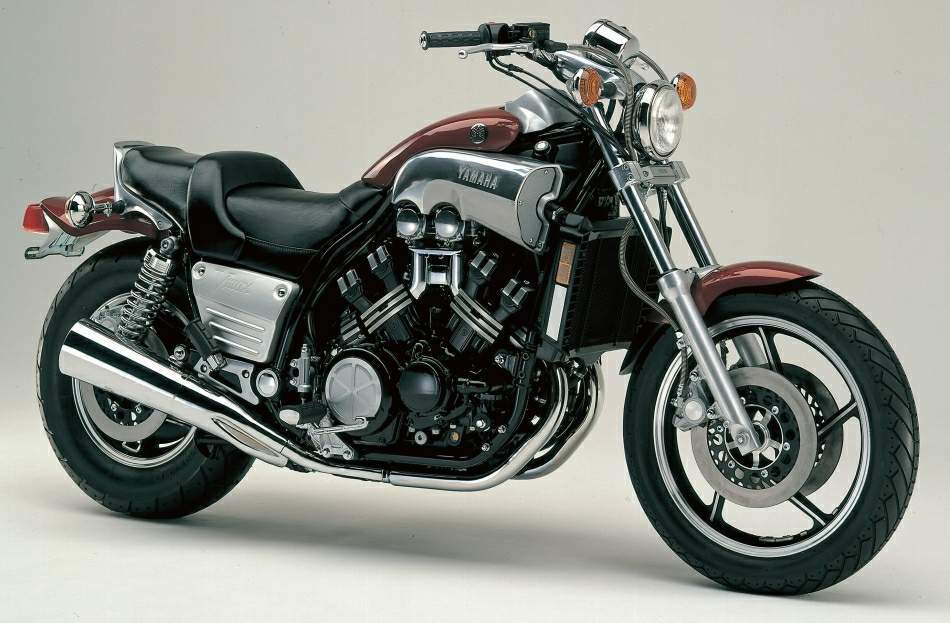
The Yamaha VMAX might be a product of the 80s, but in terms of looks and appeal, it’s timeless. When it first rolled onto the scene in 1985 it was met with thunderous applause. Why? Because while it was a low-slung cruiser, it had a heart of pure performance. That’s right; the VMAX became the world’s first performance cruiser, a genuine muscle bike, and it would be the industry-standard performance cruiser until 2010, with the arrival of the Ducati Diavel. But some would still say that the VMAX is the superior of the two.
The original VMAX (actually known as the V-Max, rather than the newer VMAX moniker) featured a potent 1,197 cc liquid-cooled V-twin engine that could produce an absolutely immense 145 horsepower and 83.1 lb-ft of torque at the rear wheel. It could even hit a top speed of 150 mph. All in all, the spec sheet read like a sports bike, but in reality, the VMAX was a comfortable and smooth cruiser.
It’s still a favorite among riders to this day, and that’s why it makes our list.
BMW R80/GS
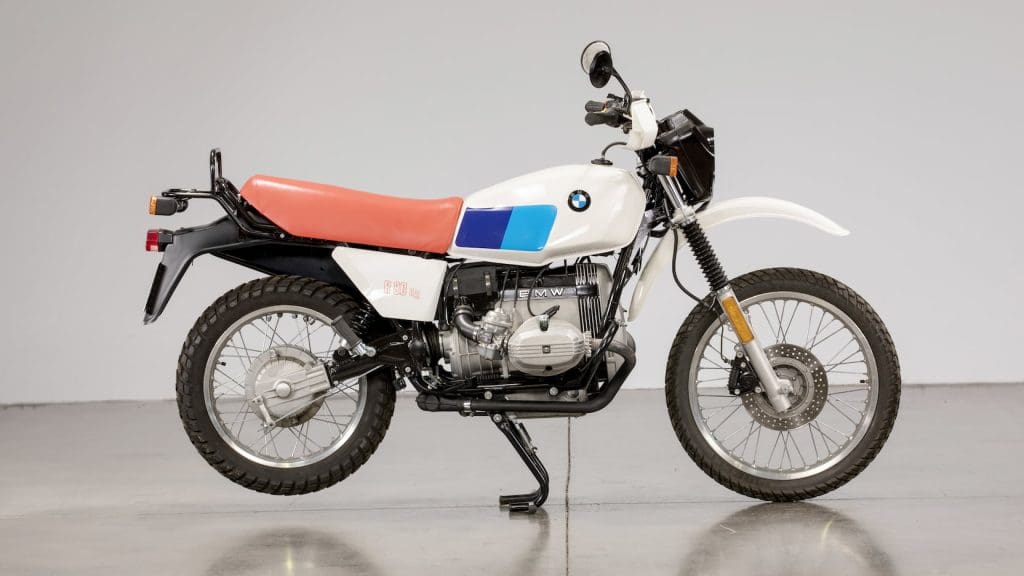
In 1980, BMW released a motorcycle that would go on to define the brand for decades to come, and forge an entirely new segment in the motorcycle industry. It was called the BMW R80 G/S, and without it, we wouldn’t have the dual-sport adventure bike as we know it today.
You see, before the arrival of the R80 G/S, you had the choice of buying a motorcycle for the road, or a motorcycle for the trails. Nothing stopped riders from taking road bikes off-road, but they weren’t very good at it. Similarly, riders could take their dirt bikes for longer rides, with road sections too – they just weren’t comfortable for long distances. The R80 G/S was a combination of both modern road bike and capable off-roader.
The G/S–or Gelände (off-road) / Straße (street)—featured a 795 cc flat-twin boxer engine with 50 horsepower and 41 lb-ft of torque, wrapped in a durable chassis with long-travel suspension, off-road rims, and a host of long-distance riding accessories. It won the Paris-Dakar Rally numerous times, but it also won the hearts of the riding public, going on to evolve into BMW’s most popular motorcycle ever made.
Honda Shadow
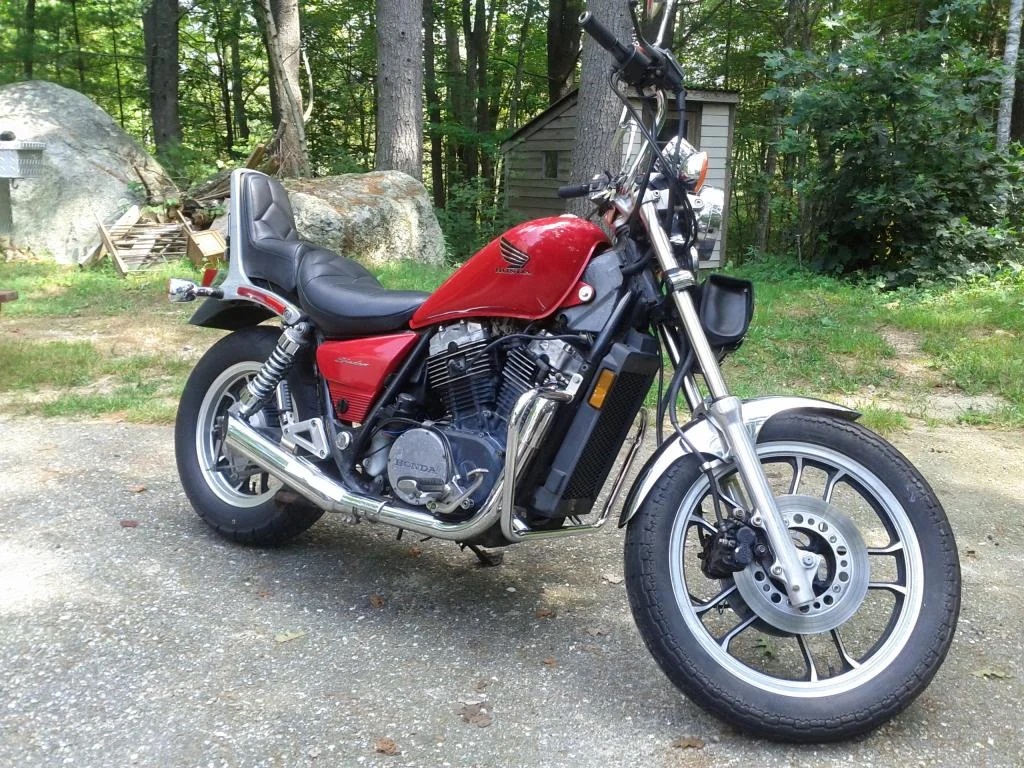
Switching back to cruisers for a second, this time we have another Japanese cruiser that has stood the test of time. In 1983, Honda unveiled the Shadow range. The Honda Shadow came in a variety of engine sizes, but every single one of them was designed with the American rider in mind. In short: Honda saw Harley’s corner of the market and wanted a slice of the action. But it wasn’t plain sailing for Honda.
In the early 80s, the USA government imposed tariffs on imported Japanese motorcycles with a displacement of over 701 cc. So, when Honda unveiled the Shadow VT750C in 1983, Big Red was forced to reduce its displacement to 700 cc the following year if it had any chance of taking off in the West. Fortunately, the tariffs were lifted in 1985, allowing the Shadow to swell into a more American-friendly 1,100 cc model.
The VT750C model came equipped with a 750 cc liquid-cooled V-twin engine, with a six-speed transmission, ample power, and a comfortable ride experience. The Shadow may not be the most exciting model from the 80s, but it’s one of the most enduring—with the Shadow still being part of the current Honda lineup.
Yamaha FZR600 Genesis
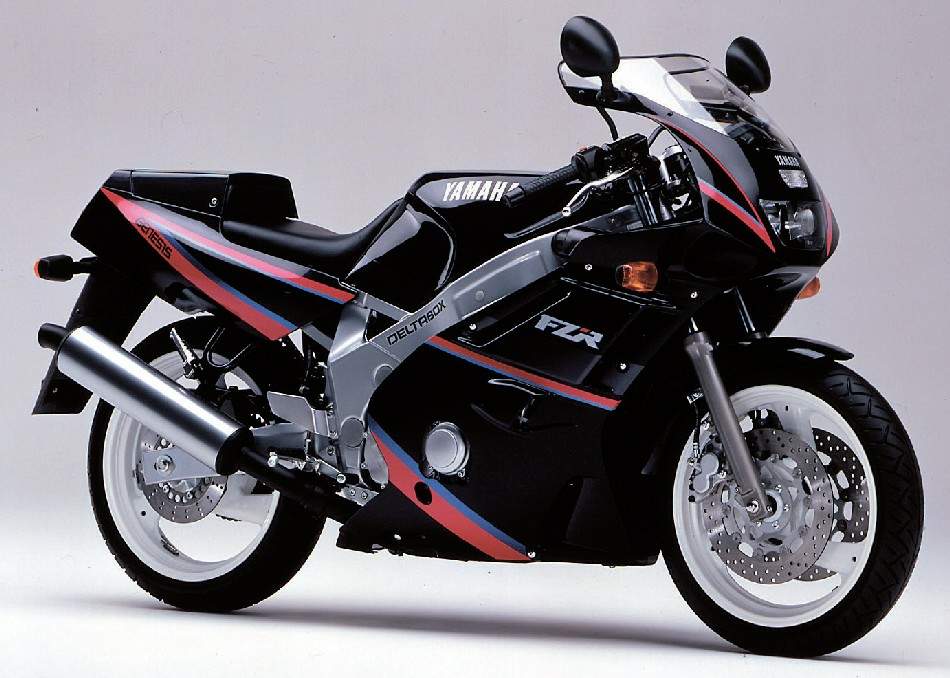
Coming in just at the very end of the 80s, we have the Yamaha FZR600 Genesis. Compared with other motorcycles on this list, the Genesis might not be considered as important or iconic – but it was Yamaha’s first foray into middleweight supersport territory, and it laid the foundations for what would become the legendary Yamaha YZF-R6.
For this list, it was tempting to go with another Yamaha RD model, but we covered one of those in the 70s list. Instead, we thought it was a better idea to focus on a Yamaha four-stroke sports model instead. And the FZR600 is the best candidate. Not only was it a fantastic motorcycle, but it was a sales success and enjoyed many production years.
Built around a 599 cc liquid-cooled inline-four engine, the Genesis was able to produce a handsome 89.6 horsepower and 48.5 lb-ft of torque. The secret to its success was its nimble handling, which was aided by the bike’s low weight of 399 lbs.
Even today, good examples of the FZR600 aren’t hard to find, both on roads and on race tracks. In the right hands, it was a formidable weapon. And it’s because of that legacy that the R6 became such a popular sports model too.
Honda Africa Twin
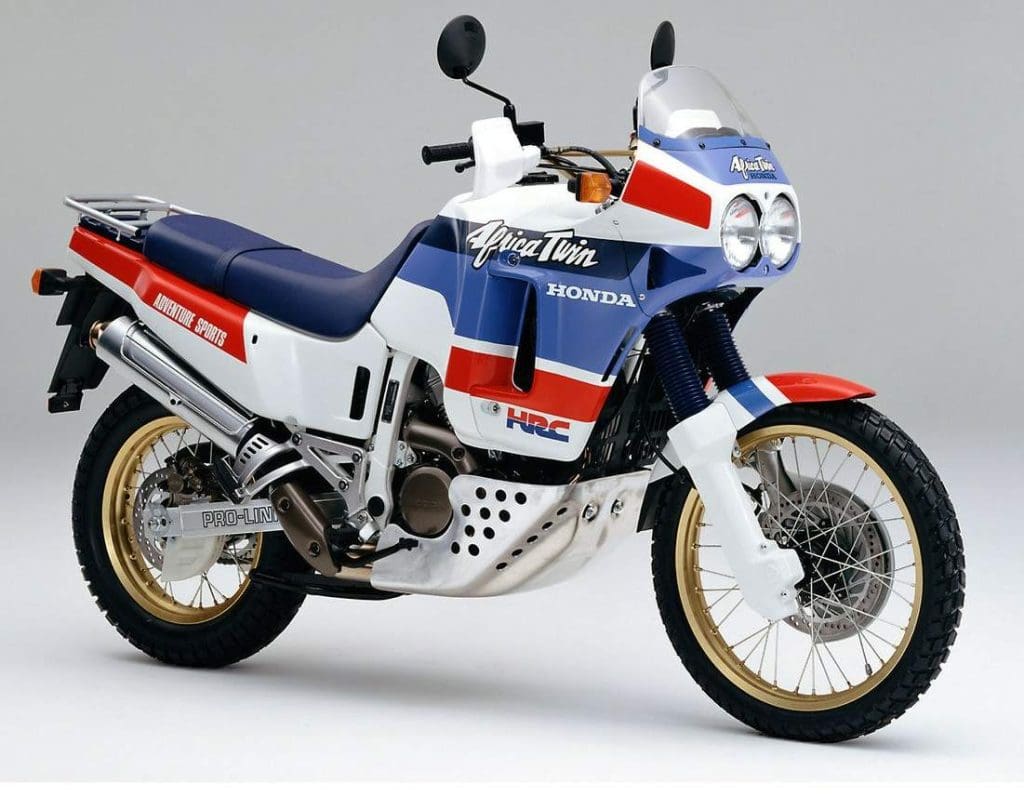
You might be thinking “isn’t the Africa Twin more of a 90s thing?” and you’d be half right. When we get around to the 90s, we’ll probably include the XRV750 Africa Twin. But we’re in the 80s now, so we’re going to look at the XRV650, the slightly smaller version that entered our hearts in 1988 and paved the way for the second-generation Africa Twin, and then the bigger CRF1100L Africa Twin model that we all know and love today.
Now, the XRV650 was based on the Dakar-winning NXR750 model, and as such, it came with a stunning HRC-inspired rally-replica paint job, dual-sport ergonomics, and a real adventurer spirit. Under the beautifully sculpted fairings, it boasted a powerful 647cc V-twin engine that produced a hearty 57 horsepower and 41 lb-ft of torque.
The engine was impressive, but it also features a full selection of top quality and durable components which can withstand abuse from lashing sandstorms, precarious river crossings, and almost every kind of terrain available. It’s because of these incredibly tough components that the name “Africa Twin” has become synonymous with “Adventure” in the riding community.
Finding an XRV650 is no mean feat, and collectors hold on to them. But there’s nothing wrong with going for an XRV750. The early models still count as 80s classics, as the first 750s were introduced in ’89.
Ducati 851
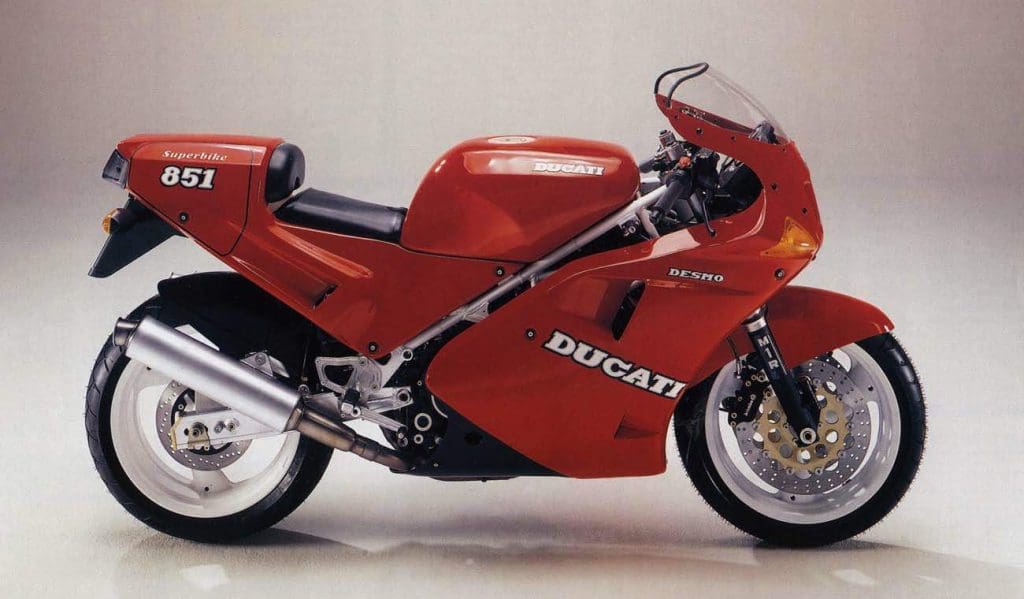
Introduced in 1987, the Ducati 851 rose to fame as one of the most exciting sportbikes of the 1980s. Or rather, one of the most exciting motorcycles of the decade that didn’t come from Japan. Not only was the Ducati 851 an Italian, but it was an Italian’s Italian. After Ducati was bought by Cagiva, its new parent gave Ducati the financial injection that it needed to develop a new engine.
The result was a liquid-cooled V-twin engine, complete with four-valve desmodromics, and with it, Ducati became competitive again. Thanks to the 851 cc engine and the 93 horsepower that it delivered, along with its signature steel tube trellis frame and stunning good looks, the 851 was able to turn Ducati’s fortunes around.
Originally equipped with Marzocchi suspension, the 851 went through a number of revisions during its 5-year tenure, evolving to accommodate Ohlins USD suspension, floating Brembo brakes, and even a new engine bore for racing homologation purposes.
While the 851 won’t be as fondly remembered as the 916 that came later on, it certainly helped pave the way for the kind of Ducati that we know and love today: exciting, powerful, fast, and dangerously attractive Italian masterpieces.
Suzuki GSX-R750
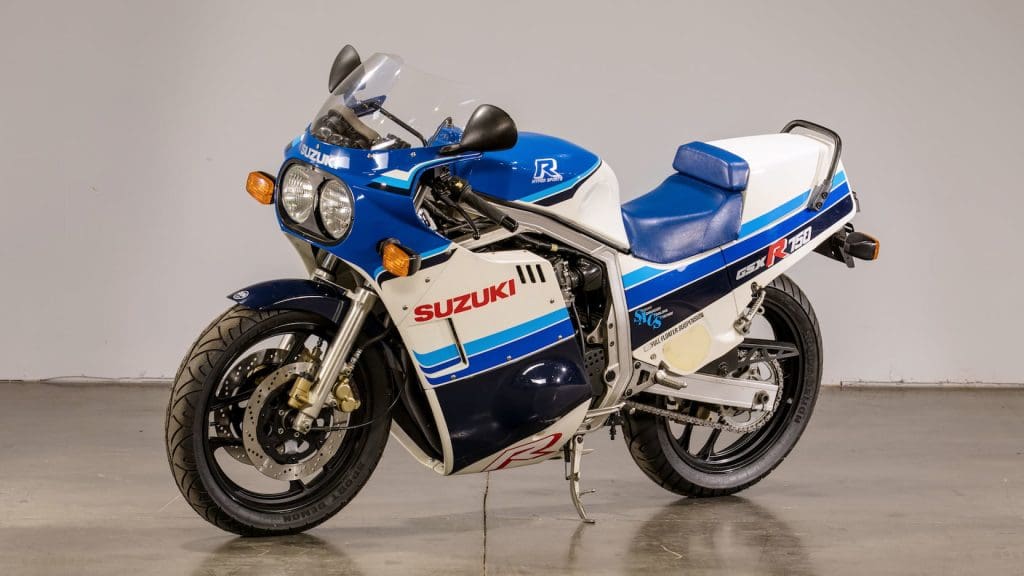
The addition of the Suzuki GSX-R750 to this list was inevitable. In fact, from here on you can probably guess which models will get a mention. But before we look at the others, let’s spare a thought for the legendary GSX-R750. It’s arguably one of the most iconic motorcycles ever made and one that is still with us today. Though, I’d argue that it looked better in the 80s than it does in the present!
The original GSX-R750 arrived in 1985 after being debuted at the 1984 Cologne Motor Show in Germany. As the bigger brother to the already existing GSX-R400, and as the production version of the factory’s GS1000R racer, the GSX-R750 was highly anticipated.
It arrived with a lightweight aluminum alloy frame, gorgeous racing fairings, flatside carbs, and twin disc brakes, and more. However, what made the GSX-R750 so attractive was its weight-saving air-and-oil-cooled engine. Drawing power from a 749 cc inline-four engine that produced a staggering 106 horsepower, 64 lb-ft of torque, and a top speed of up to and around 145 mph, it’s not hard to see why the GSX-R750 was a popular bike at the time and went on to become a legend.
Honda VFR750R RC30
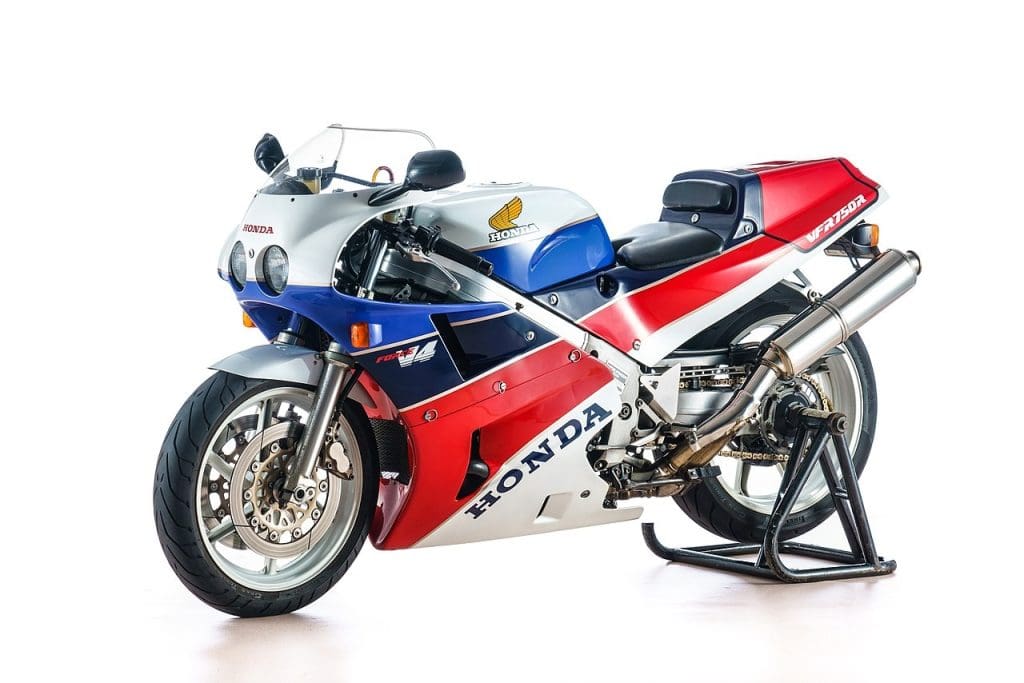
If you like the look of old-school sportsbikes, then the RC30 has to be your cup of tea. In fact, it’s arguably one of the most attractive-looking motorcycles ever made. Now, unlike the GSX-R750 which was a standard production model, the VRF740R RC30 was a homologation special designed and built to allow Honda to race in the World Superbike Championship.
Since it’s a real racer, it features everything you’d want from a genuine HRC speed machine: racing fairings, a single-seat, cutting-edge technology, and more. Under those full fairings, it hid a 748 cc gear-driven V4 engine that could produce a whopping 120 horses and 52 lb-ft (in road trim, that is), all thanks to a wide range of titanium components that are complimented by Showa suspension, a single-sided swingarm, a slipper clutch, and an innovative twin-spar aluminum frame.
All in all, the RC30 won the 1988 and 1989 World Superbike Championships, which helped catapult the VFR750R into stardom, but there’s another reason why it’s still so lusted after today: only 3000 of these were ever made, and while that’s enough to class it as a production model, it’s also enough to enough to class it as “mega rare,” too.
Suzuki Katana GSX1100S
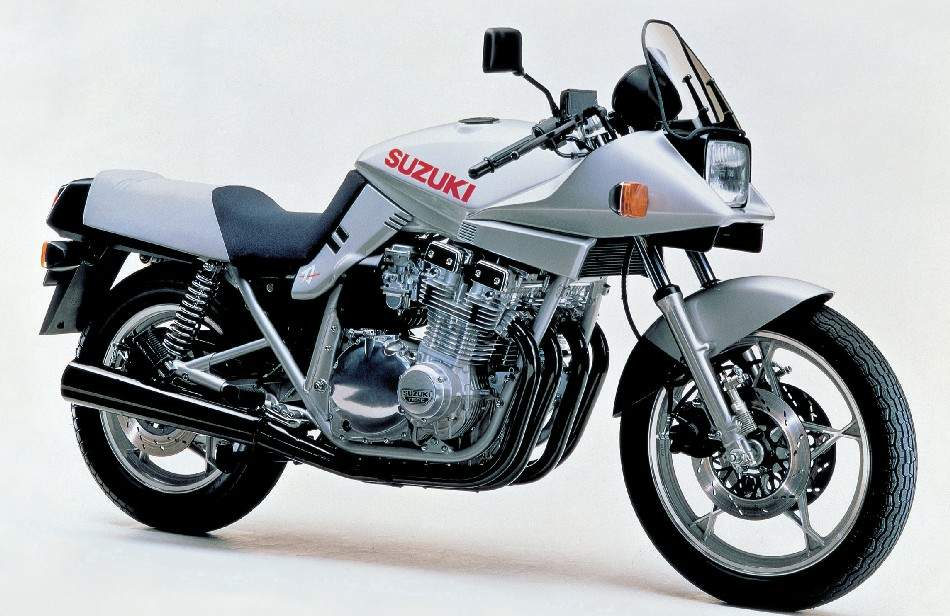
This is another “I could have easily guessed” motorcycle. The Katana is the 80s incarnate. What makes the GSX1100S such a strange and interesting motorcycle is that it was unusually designed by an external design company. Instead of using their own designers, Suzuki called Hans Muth, of Germany’s Target Design, to draw up the future of motorcycling.
The result was the Katana: a sharp sports motorcycle with an unorthodox square headlight, angular plastics that added aerodynamic advantages but without the need for curves, a functional design and feel, and a powerful engine. Of course, it also came with an integrated opinion divider that riders will either fall on one side or the other of. There’s no denying it: you can only love or hate the Katana. There is no compromise.
Under the futuristic exterior, the Katana drew power from a 1,075 cc transverse four-cylinder engine that produced an impressive 111 horsepower and 71 lb-ft of torque. It was fast and powerful, but so unlike a conventional sports machine of the day that it looked more like a movie prop than a genuine production motorcycle.
And while the Katana was certainly the product of its time, it hasn’t faded away. In fact, Suzuki has bucked the retro trend and shunned round headlights and teardrop tanks in favor of rebooting the Katana. A very smart move, in our humble opinion.
Kawasaki GPZ900R Ninja
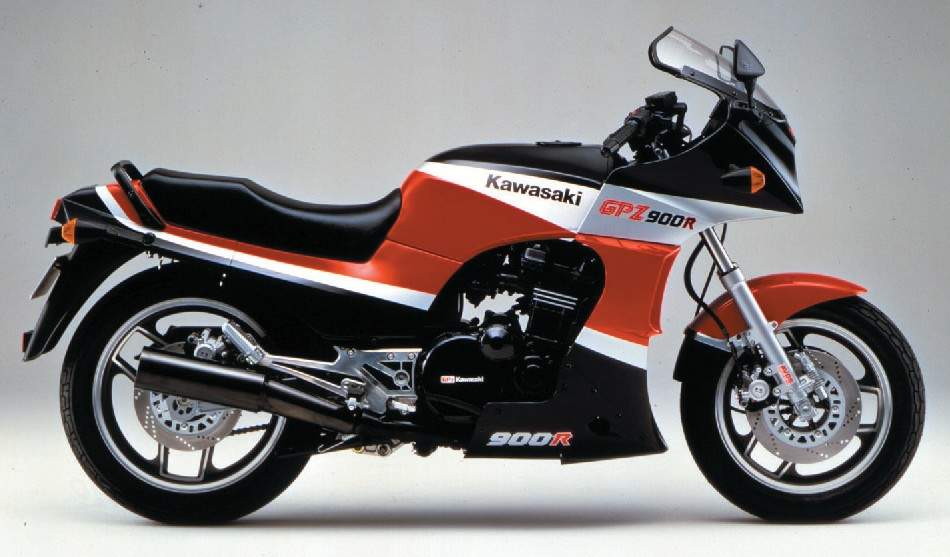
The Kawasaki GPZ900R has to be on this list. It’s the original Ninja. Ask anyone to name a motorcycle and you can bet they’ll at least be able to spit the word “Ninja” out of their mouth, even if they don’t know the context. And here’s where it all began.
First introduced in 1984, the GPZ900R was Kawasaki’s secret weapon. Developed behind closed doors for six years, the GPZ was designed to be a sub-liter class successor for the Z1. It was packed with innovation, revolutionary design language, and a very powerful engine.
Powered by a 908 cc 16-valve, liquid-cooled, inline-four engine—a world’s first—and capable of producing 115 horsepower, 63 lb-ft of peak torque, and able to produce an incredible top speed of over 150 mph (a first for a stock road bike), the GPZ900R single-handedly raised the bar for sports motorcycles.
Regardless of its specs or the quality of its engineering, the Kawasaki GPZ900R makes it onto this list because of its status as a Hollywood cultural icon. Not only is it the first Ninja ever made, it also featured in Top Gun. While the former is the more serious reason, and the one that has left the bigger impact on the motorcycle industry, the latter still counts. Let’s be honest, Top Gun, Maverick, Miramar, F-14s, and Berlin’s Take My Breath Away is what the 80s is all about, and that’s what makes the original Ninja such an important cultural icon.


